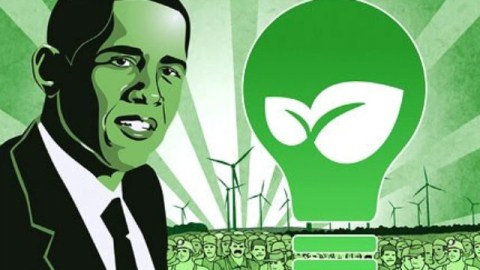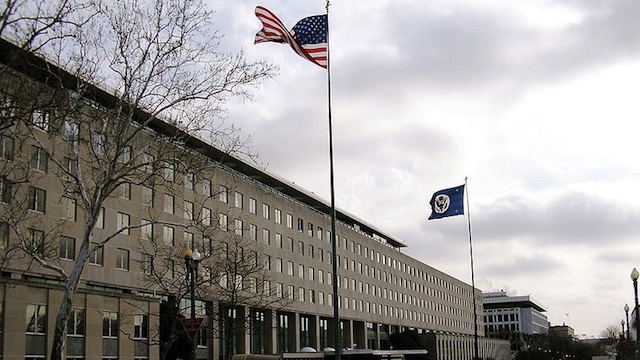Standing Up for Clean Energy: Comparing Green Jobs to Coal Industry Jobs

Last week I called attention to a front page article at the Washington Post which questioned the impact of the $90 billion spent by the Obama administration on the creation of jobs in the energy efficiency and renewables sector. As evidence of limited impact, the article compares the 225,000 jobs saved or created in the sector to the 7.5 million total jobs lost nationally since the recession took hold in 2007.
Yet is this the right comparison? Instead should the comparison be not to total jobs lost in the U.S. but to other energy sectors such as coal? The answer has strong implications for the ongoing debate over climate policy, especially when opponents to action refer to legislation as “job killers.”
Today in response to the Post article, appears a letter from Michael T. Echart, president of the American Council on Renewable Energy. As he points out, the article’s comparison leaves readers with a faulty sense of the overall size of the green job sector and of its potential.
As he notes, the U.S. coal industry employs 80,000 people, yet in the minds of many Americans and lawmakers the perceived size is likely much greater. Yet consider as he points out, that the U.S. wind industry alone employs 80,000 people and is the long term likely to have a much stronger job growth outlook than coal.
Eckhart’s letter underscores perhaps an important point that should be more strongly and accurately emphasized by both green energy advocates and journalists: The renewables and efficiency industries already lead the coal industry in current number of Americans employed and in job creation. And this gap continues to widen.
Source Watch provides a better statistical comparison on this front, estimating for example that the coal industry today accounts for just 0.12% of jobs in the United States.
There are approximately 174,000 blue-collar, full-time, permanent jobs related to coal in the U.S.: mining (83,000) [the figure which Ekchart likely refers to], transportation (31,000), and power plant employment (60,000)…. The U.S. civilian labor force totaled 141,730,000 workers in 2005; thus, permanent blue-collar coal industry employees represent 0.12% of the U.S. workforce.[1] (Compare this percentage with the 1.89% of U.S. workers who worked in coal mining alone in 1920.)
This total does not include indirect employment – workers who are not directly employed in the coal industry, but whose jobs are supported by that industry. It is entirely possible that thousands – even tens of thousands – of workers are indirectly supported entirely by the coal industry. However, the National Coal Association‘s 1994 estimate that the coal industry directly and indirectly employs around 1.5 million people[2] seems exaggerated. The level of indirect employment is in the low hundreds of thousands – not in the millions.
Also in comparison to coal, consider some figures on other parts of the renewable energy sectors, from the industry trade site RenewableEnergyWorld.com:
The solar power industry doubled the number of people that worked in the industry from 2009 to 2010, from approximately 50,000 in 2009 to 100,000 in 2010, according to the latest reports. In 2011, it is expected to grow the number of jobs in the industry by 26%. “You’d be hard pressed to find another industry with a 26 percent job growth rate for 2011,” said Rhone Resch, president of the Solar Energy Industries Association (SEIA).
The Solar Foundation released its National Solar Jobs Census 2010 at Solar Power International in October, showing that the solar industry is creating jobs at a much faster rate than the overall U.S. economy, which is expected to grow at around 2%. The report documents, through 2500 interviews with employers throughout the country, that over the next 12 months, more than half of U.S. solar firms expect to add jobs, while only 2% expect to cut workers. Firms are adding employees in all 50 states and the fastest growing jobs are installers and electricians….
….In terms of bioenergy and biobased products, the U.S. is expected to lead the world in global development according to a report form the World Economic Forum released earlier this year. In the report, data provided by the Biotechnology Industry Organization (BIO), shows that as of June 2010, the biorefinery industry accounted for more than 40,000 jobs in the U.S. The commercialization of second and third generation biofuels is expected to create 800,000 new jobs (190,000 direct new green jobs, and 610,000 indirect new jobs) in the U.S. by 2022. Achieving the biorefining industry’s full potential could create tens of thousands more new jobs within the next five years, said the report.
In another report, “The Economic Impact of Advanced Biofuels Production,” which was released in February 2009, it was estimated that under the renewable fuels standard scenario the total number of jobs created through the production of second and third generation biofuels will be 29,000 by 2012. “Taking into consideration indirect job creation as a result of the economic stimulus created by biofuels development brings total job creation to 123,000 by 2012,” said the report. These short-term job growth number could be lower than the 29,000 and 123,000 projected due to the fact that the RFS was scaled back in February 2010, after this report was issued. Under the original ruling, it was required that 100 million gallons per year of cellulosic ethanol be on the market by 2010 but once it became clear that that was unachievable the number was reduced to 5 million gallons. The 2022 job growth numbers are solid however, as the overall number of gallons of cellulosic ethanol that will need to be produced by 2022 remained unchanged.
Based on the coal and oil industries’ history and heavy investment in public relations, lobbying, and advertising, Americans and lawmakers have a faulty statistical sense of these industries’ true contribution to the U.S. workforce. In addition, Americans and lawmakers tend to underestimate the current size and near term growth potential of the clean energy sector.
This leads to false attributions and susceptibility to claims by conservatives and others that climate legislation is a massive “job killer” when in fact it is a likely net job creator.
Correcting this faulty statistical sense, especially in comparison to the current and projected size of the clean energy sector, should be an important communication focus and goal. What’s needed is the avoidance of hype about the clean energy sector and instead strong third-party studies, analyses, and endorsements from relevant economists and market research firms.
Yet beyond these statistical presentations and expert endorsements, job potential and creation needs to be emphasized at a local level, with specific examples and companies featured in local news coverage and in public engagement campaigns. It’s another example of how as we move into the next stage of the climate debate, many different factors reinforce the importance of local and regional engagement.
See also:
A Post-Partisan Plan for Engaging the Public on Climate Change





